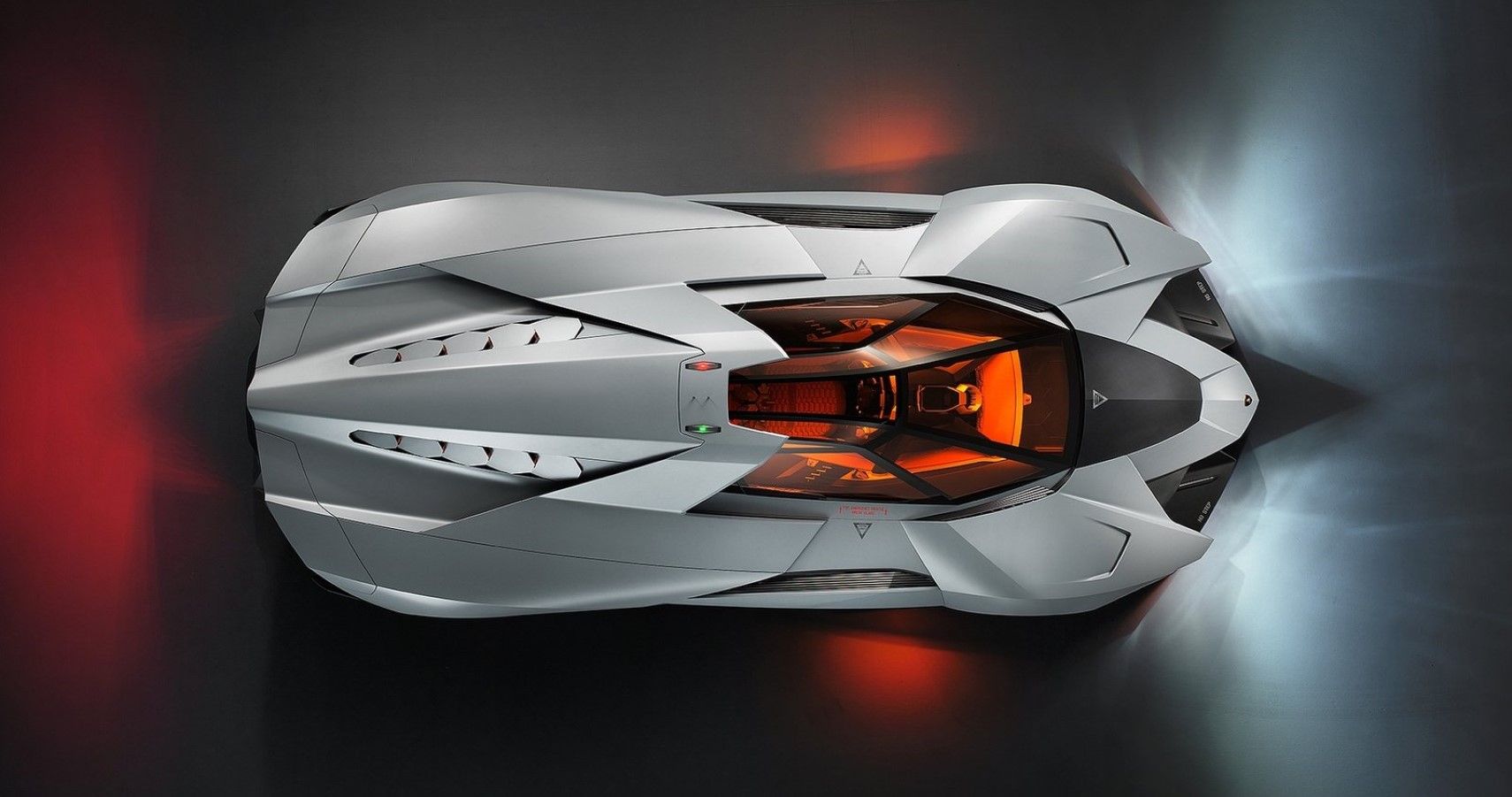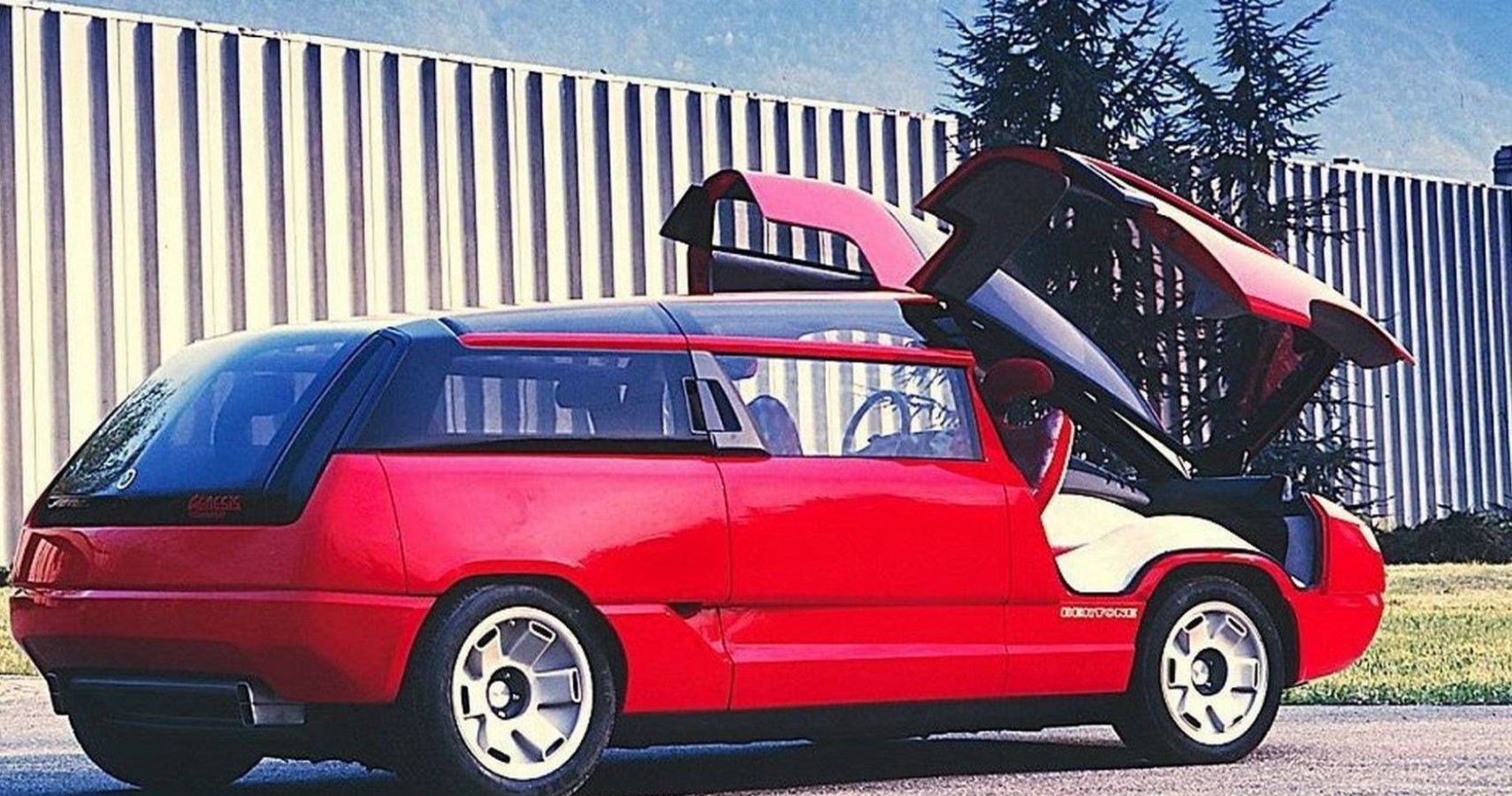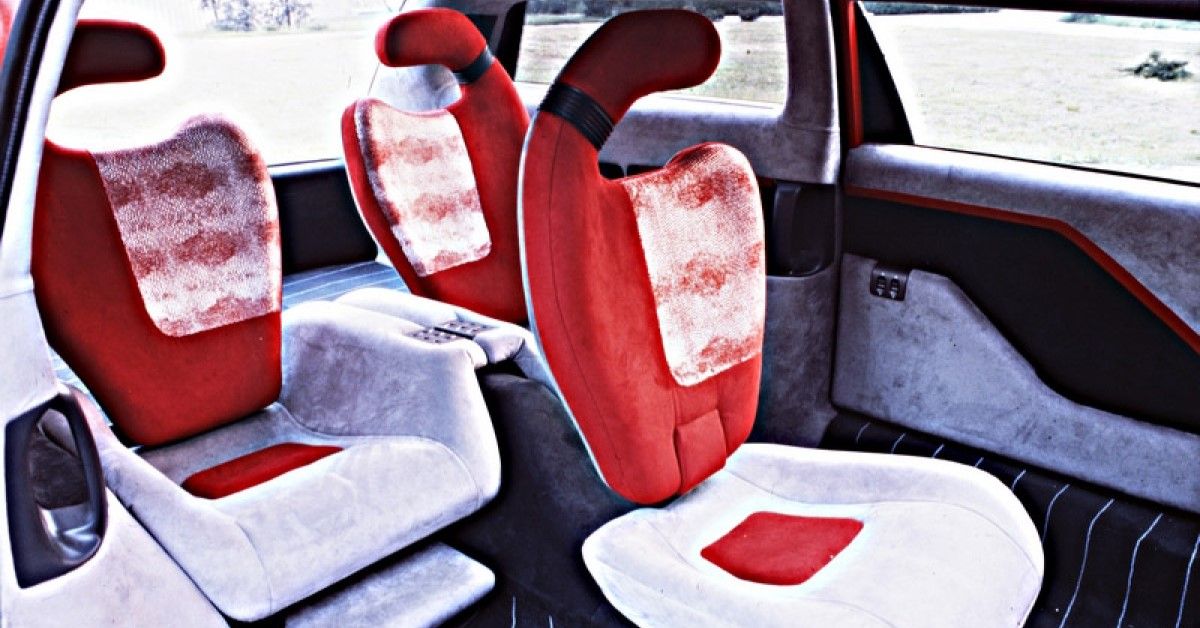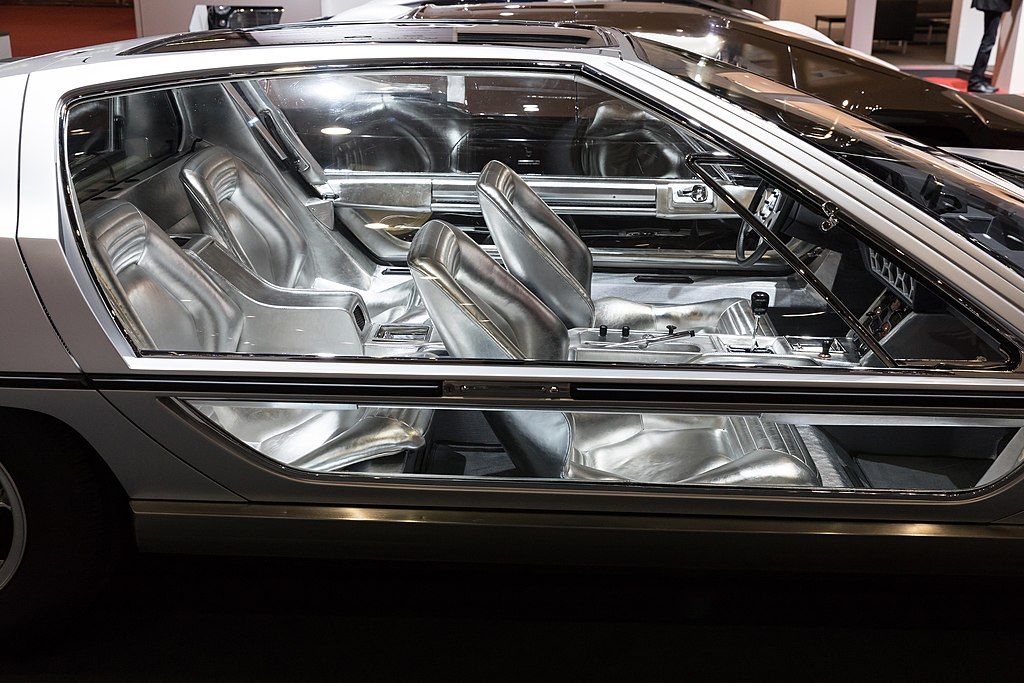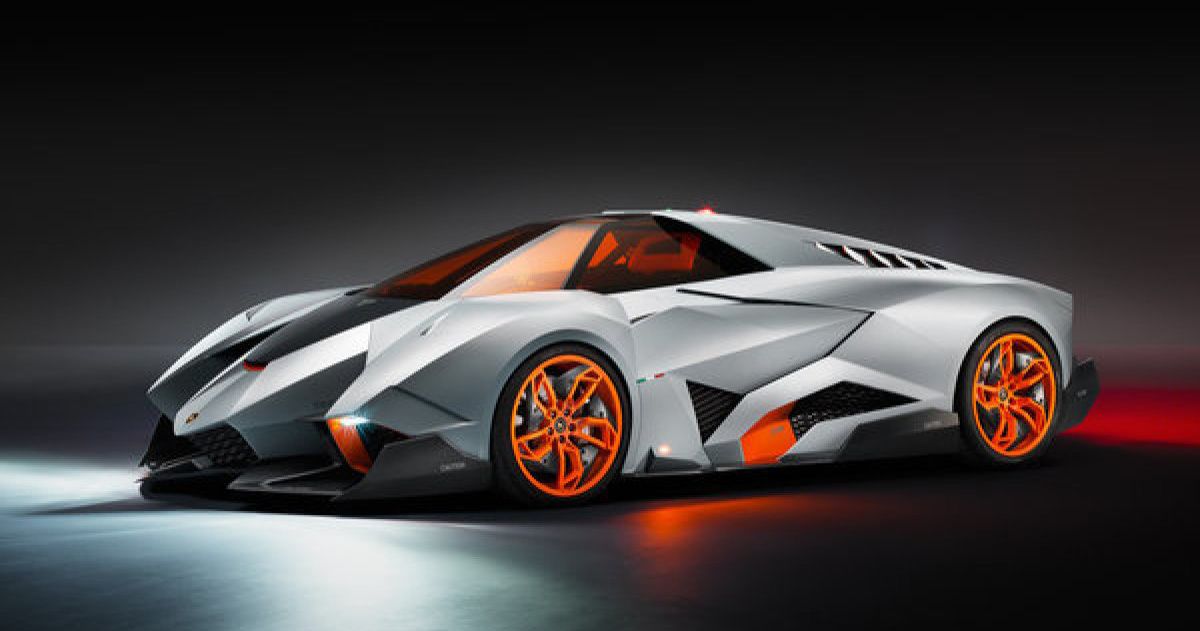Over time and its ownership by Audi, the sting from the horn of the Lamborghini design and brand has dissipated. Car brands like fellow Italian brand; Pagani, have taken over the mantle of off-the-wall cars with outrageous looks and sounds. Especially in the interior department, when you see an interior of a Pagani your knees wobble. Lamborghini’s are still exotic pieces of jewelry, but their shine is dimmer than it was.
Throughout Lamborghini's history, it has been known for the company to release one-off show cars that aim to advertise the brand's forward-thinking ethos. These show cars were showing what could be possible, which is of course what the term 'concept cars' means. The Bertone Genesis and Lamborghini Marzal perfectly sum up the brand with both their extreme take on design and performance.
The Genesis is a family minivan with some 1980s funky design. The Marzal is a piece of art meant to be driven around Monaco while you put everything on red at the casino. These two models suit the brand of Lamborghini perfectly. But topping them all is the wildest Lamborghini concept out there, that makes spaceships look bland!
Updated September 2022: We have updated this article with a new wild concept car that Lamborghini has awed us with, and it is straight out of a Sci-Fi movie.
Let's take a gander at these 'what if' Lamborghini's.
The 1988 Bertone Genesis
If you were to glance at this car and guess the brand, Lamborghini wouldn't be one of those guesses. This car doesn't scream Lamborghini at all, its design is futuristic, yes. But not Lamborghini bonkers futurist. However, this is actually a Lamborghini concept from when they were owned by Chrysler.
The Bertone Genesis has a decent-sized engine for the 1980s with a 5.2 liter V12 producing a fun-sized 461 hp. Which when advertised as an SUV for the family, would be nice to have on the school run in the morning. This engine is in fact the exact same one you would find in the Lamborghini Countach Quattrovalvole.
So when you reached school you could brag about that fact to your friends over your juice boxes. However, the Bertone Genesis had a three-speed transmission driving the rear wheels rather than the five-speed one you would find in the Countach. The gearing in the Bertone was longer as well, so despite its V12, it wasn't that fast.
But that doesn't take anyway from the fact that what we have here is a V12 minivan designed by Lamborghini in the 1980s. We wonder how they came up with such a concept. Brought out in the Turin Auto Show, it had gullwing front doors and sliding rear ones. The interior design further screamed the 1980s futuristic vibe. Imagine climbing out of those doors and then walking into class.
For those cinephiles out there, the design of the Bertone Genesis is reminiscent of the designs you would find in a Blade Runner (1982) film. The car has digital interior functionality yet an analog feel to it. Its exterior is futuristic yet familiar. The seating, as you can maybe tell, was adjustable.
Which for long journeys would have been a big selling point, that's if Lamborghini ever did. The Bertone Genesis was only meant for a show car and has stayed that since its reveal in 1988. However, it still turned heads when it was shown at the 2020 Retromobile show in Paris.
The 1967 Lamborghini Marzal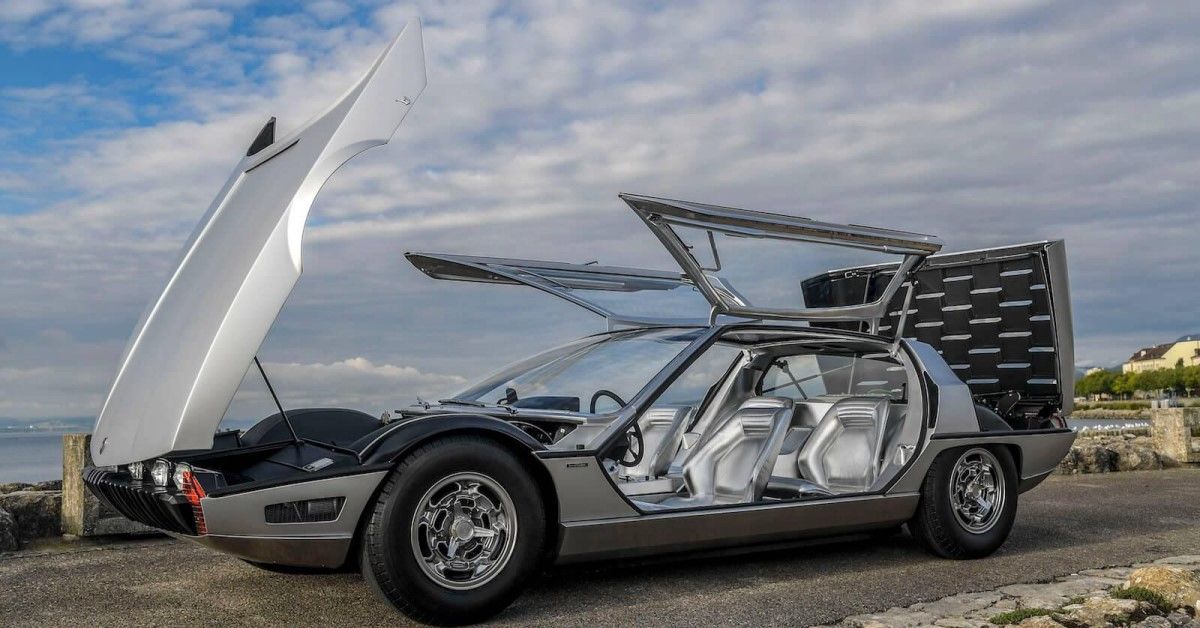
If there ever was a Lamborghini that screamed to be featured in a James Bond film, this was it. Especially as it bears a glancing resemblance to a Lotus Esprit. This time, however, there is no Lamborghini V12 but an inline-6 2.0 liter which produces 177 hp and sits at the back. Not too bad for 1967, especially when its top speed was 118 mph, with a 5-speed manual transmission.
But in 2021, 177 hp isn't a spectacular figure. The Marzal was based on the Miura chassis but Lamborghini elongated it. As they did with the Bertone Genesis, they only made one, it was never put into production. Its first public appearance was at the 1967 Monaco Grand Prix.
It's whereabouts today are known as it was sold at an RM Sotheby's Auction in 2011 for $1,853,364 to a private collector. The body of the Marzal was made of steel and incorporated transparent gullwing doors. Its interior is eye-catching, to say the least. The Marzal has a honeycomb-designed dashboard and center console.
The honeycomb-like features spilled over onto the seats, steering wheel, and brackets as well. The keen-eyed Lamborghini fans out there would be able to notice some design features on the Marzal that feature in later models. In 1968 Lamborghini released the Espada, designed by the same people that did the Marzal and the Genesis, Bertone.
The Espada featured everything you see on the Marzal except for its glass gullwing doors and rear-engine placement. The Espada Series 1 got a bigger and more powerful engine as well, a V12 (of course) which produced 330 hp - 153 more horsepower than the Marzal had.
The 2013 Lamborghini Egoista
The Egoista was Lamborghini celebrating its 50th anniversary in the most Lambo way ever! This futuristic sing-seater spaceship-on-wheels was designed by the Head of Design of the VW Group and is a homage to the Bull raging unapologetically for half a century.
Powering this undrivable machine is the iconic Lambo 5.2-Liter V10 engine. In the Egoista it churns out 600 hp to all four wheels. While the Egoista is the most expensive Lamborghini ever built at a whopping $117 Million, there was only one made, and it will stay on display at the Museo Lamborghini at SantÁgata Bolognese.
Source: Lamborghini

